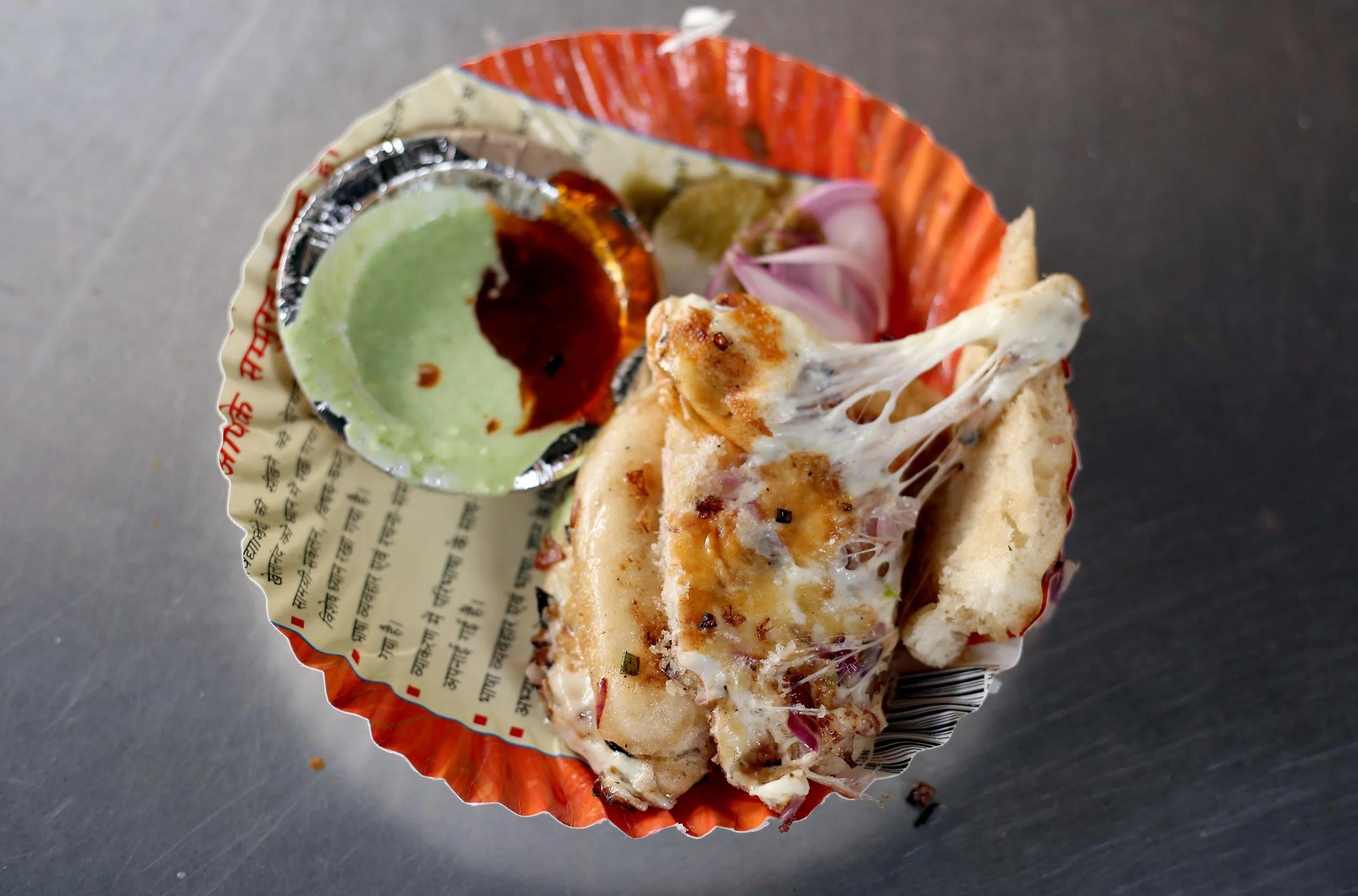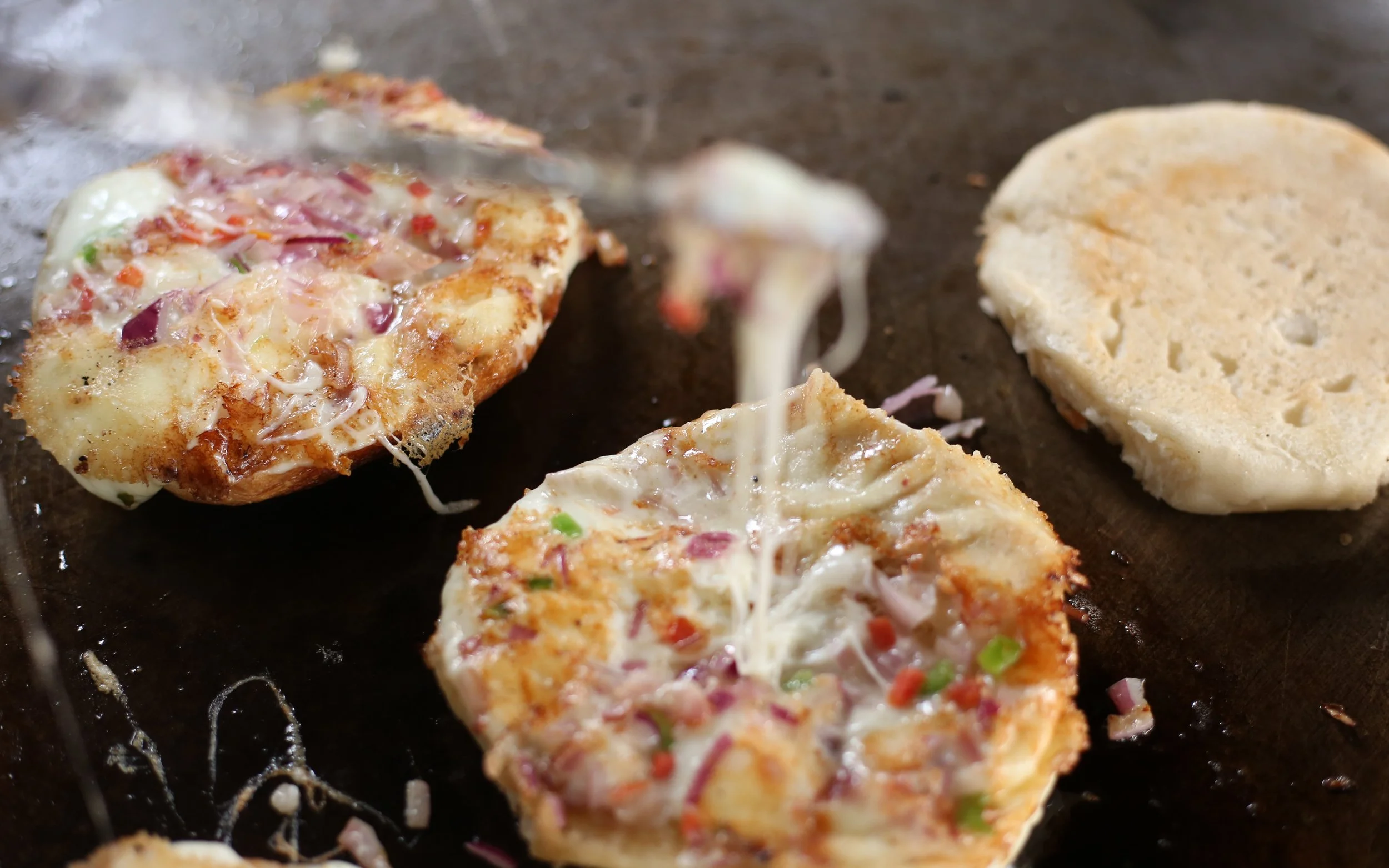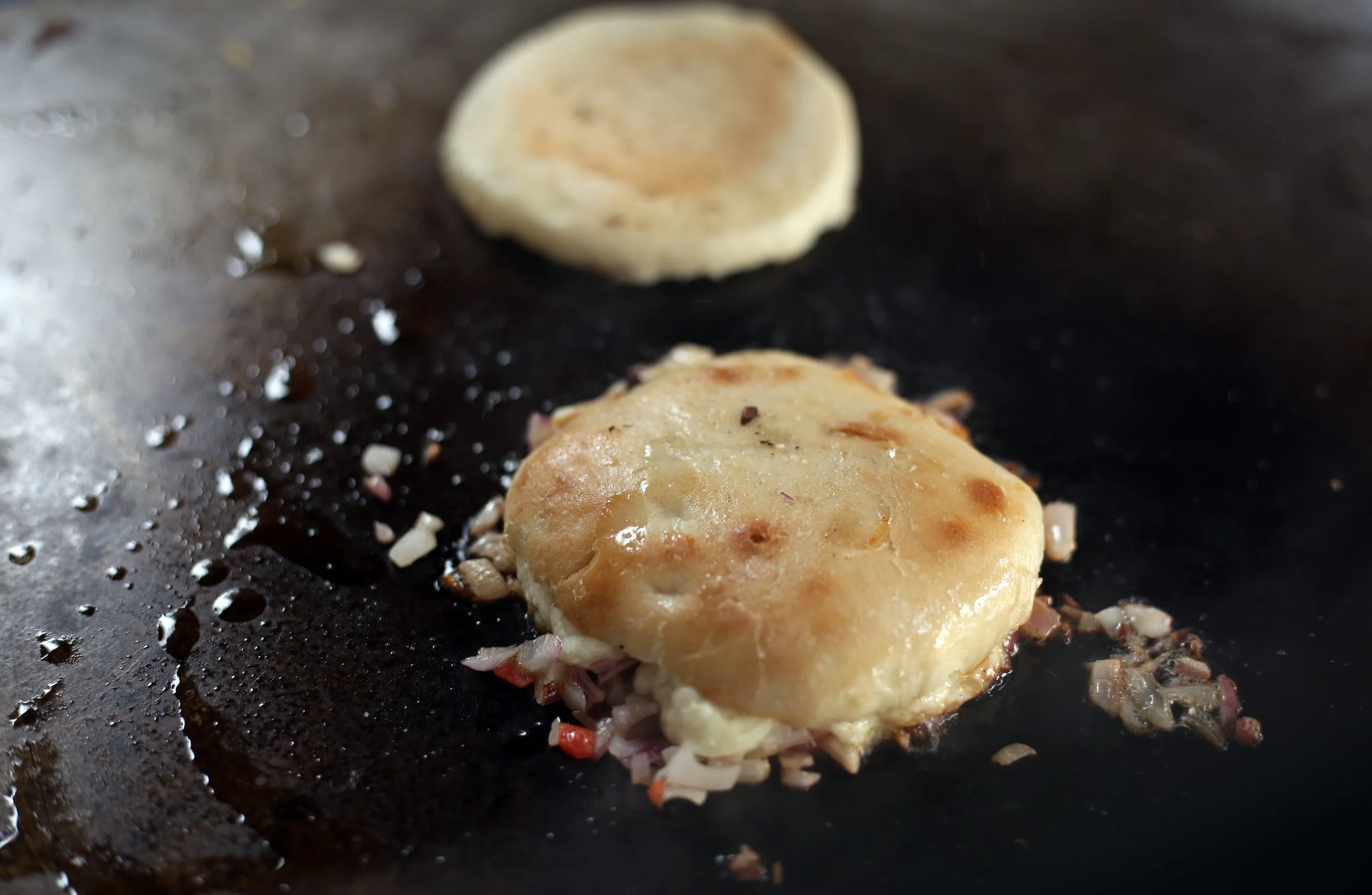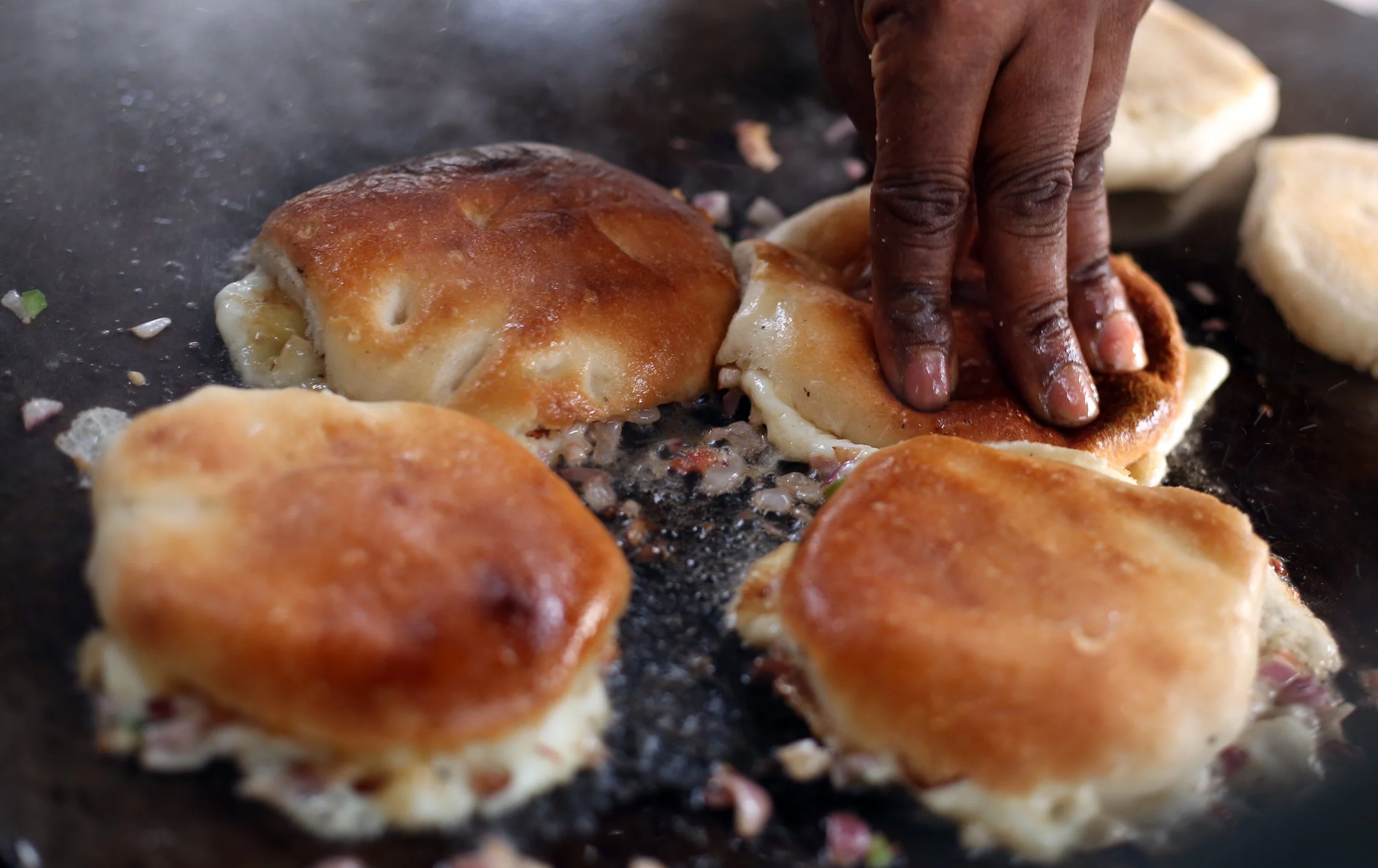The Pastoral Cheese That is Growing a Larger Footprint
Text by Bivek Mathur
Dried kalari cheese. Photo courtesy: Monika Kapoor Sarkhel
Not much has been written about kalari. This traditional Himalayan cheese is made by nomadic tribal communities such as the Gujjars and other communities in the Jammu division of the Union Territory of Jammu and Kashmir, as well as in the Kashmir division.
(In 2019, the erstwhile state of Jammu and Kashmir was bifurcated into two Union Territories — Jammu and Kashmir and Ladakh. This was after the abrogation of Article 370 of the Indian constitution, which guaranteed special status to the state and the autonomy to define its own rules.)
Known by different names such as “milk chapati” in English, “maish krej” in Kashmiri and “kaladi” or “kalari” in Dogri, this traditionally ripened cheese is widely loved by people of the Jammu region. This all-weather street snack is usually eaten with kulcha (or a kind of bun), which is a popular delicacy all over north India.
Kalari is made of raw, full fat cow, buffalo or goat’s milk. Unlike cheese, the raw milk for kalari is heated mildly. The ideal temperature is achieved by vigorously stirring it with a plunger-like tool.
Kalari is often pan-fried and served with a tangy chutney. Photo courtesy: Alok Pathania
The warm milk is then coagulated with the addition of an acidic ingredient, which is locally known as matthar. Mathhar is the sour, thin whey that is a byproduct of cheesemaking. The coagulated milk mass is then compacted, shaped into rounds and dried in sunlight for several days.
Kalari made of buffalo’s milk looks like a pressed dough ball, while kalari made of cow milk has a slightly yellow hue. This cheese has a dense, stretchy texture, and a mild mozzarella-like flavour. Kalari is usually sautéed in its own fat or in vegetable oil or animal fat for additional flavour, and salted before it is served. Pan-fried kalari, which is commonly served with a tangy chutney made of tamarind, onions, mint and tomatoes, has a crisp exterior and a soft, molten texture on the inside.
One kilogram of kalari costs between Rs 320-450 per kg (4.28-6.02 USD per kg) depending on the quality of the milk used. Kalari made of full fat cow milk is costlier than buffalo’s or goat’s milk due to its superior taste and aroma.
***
According to physicist-turned-cheese maker Aditya Raghavan, while kalari is indigenous to Jammu, the technique for making it may have travelled east from Central Asia. He explained that the Gujjars may have been introduced to it through a shared system of knowledge.
Islamic by faith, Gujjars are the largest scheduled tribe in Jammu and Kashmir. Traditionally they are herders, who migrate to the mountains of Jammu and Kashmir along with their livestock during the summer months in search of green pastures. While in the winters, they descend to the plains. There, they make a living by selling milk and milk products.
“Kalari is a pastoral product,” Raghavan says. “I learned how it was made by the Gujjars in Kashmir’s Pahalgam area. It is their own cheese. Just anthropologically speaking, one can see a connection to cheeses in places like Turkey and Armenia. The technique/knowhow travelled east at some point, hundreds, maybe thousands of years ago.”
kalari cheese may have a historical connection to string cheeses from Central Asia and the Middle East. Photo courtesy: Alok Pathania
According to Raghavan, anthropological accounts of cheeses that share a resemblance to kalari can be found in Central Asia.
“There are heat-stretched cheeses (known as pasta filata) throughout Central Asia and the Middle East. This is our best bet in understanding how kalari came into existence,” he said. “One example of such cheeses is Armenian string cheese.”
Armenian string cheese or pasta filata, which literally means “pulled curd”, is a white cheese typically made of unpasteurised goat, sheep or cow’s milk. It derives its name from the fact that it forms long strings that are braided together.
However, Dr. Lalit Magotra, an eminent scholar and researcher of Jammu’s Dogra culture, disagrees with Raghavan’s theory that kalari probably came from Central Asia.
“If kalari’s place of origin was Central Asia, it would have been quite popular in Afghanistan or Pakistan,” he said. “But that’s not the case. kalari is the invention of people of Jammu and parts of Himachal Pradesh.”
According to him, people in the Jammu region and tribal Gujjars would make kalari to store milk in a stable form for a longer period of time.
Kalari is often sauteed in its own fat, or in mustard oil or animal fat. Photo courtesy: Alok Pathania
“The Dogras (or residents of Jammu and Himachal Pradesh) and the tribes settled in Jammu hills also made ghee to store milk. But kalari would have been invented to keep the proteins of the milk intact,” he said.
Substantiating further, Magotra explained that some of the proteins in butter are lost when it is heated at a high temperature to make ghee. However, since the milk used to make kalari is only mildly heated, the proteins remain intact.
According to Magotra, kalari tastes distinctly different from other local cheeses, such as paneer. The flavour profile of kalari also changes as it ages. “There is a huge difference in the taste of fresh and aged kalari,” he said. “Fresh kalari is mild and milky, but it gets tangier when it is dried, like the preserved blue cheeses of Europe.”
***
There are also differences in the kalari made in different parts of the state. For instance, kalari made mainly by womenfolk in towns such as Udhampur and Reasi in the Jammu region are smaller in size. While the kalari made by the Gujjar community in Rajouri, Poonch and Kashmir are the size of a roti and dark yellow in colour. This is the reason the latter kind is known as milk roti.
Dr. Javaid Rahi, an academic who belongs to the Gujjar community and has written several books on the Himalayan tribes and their culture, attributes the dark yellow colour of Gujjar kalari to their use of full-fat cow milk.
According to Rahi, after the fermented milk is coagulated and compacted, the Gujjars place the large, bread-sized kalaris in handmade baskets of wild grass and bamboo.
Kalari served with kulcha has become a popular snack in recent times. Photo courtesy: Alok Pathania
Then, these baskets are hung in sunlight for months until all the moisture in the kalari is evaporated and it takes on the texture and appearance of a hard rock.
“The dried kalari is then ground. Gujjar women use this powder to treat diarrhoea in tribal children,” said Rahi.
Kalari is also added to a sabzi (or vegetable side dish) along with other green leafy vegetables. However, in the modern day, kalari is more popular as a street snack. In the Jammu region, it is pan fried and served with toppings such as onions, chillies, tomatoes and coriander leaves. In other parts of the state, it is also served along with a sweet chutney.
“In our time, we used to have pan-fried kalari with roti. But over the years, having kalari with kulcha and sliced bread has become the new trend,” said Magotra.
***
Despite its popularity in Jammu, kalari doesn’t enjoy quite the same status in Kashmir. This difference is a reflection of the diverse socio-cultural and religious makeup of the region.
Even though it is still largely a pastoral product, some efforts are underway to promote kalari beyond the communities where it is traditionally made. Raghavan mentions Himalayan Cheese, an enterprise in Pahalgam that sells kalari made by Gujjars.
“The kalari making technique is being preserved [by Himalayan Cheese],” said Raghavan. “And the income from the sale of kalari goes back into the community.
Mirai-Maia is another Instagram brand that is trying to popularise kalari across India. Started by Monika Kapoor Sarkhel, whose mother is from Jammu, Mirai Maia sells a range of products that are influenced by her Dogri heritage.
Sarkhel says that there has been an enthusiastic response to kalari, which she only sells via Instagram.
“People are experimenting with kalari by combining it with other ingredients in creative and interesting ways, which is exciting for us to see,” she said.
She is hopeful that the popularity of kalari will spread far beyond the communities that traditionally make and eat it.
“The experimentation suggests that people will consume it in newer ways and it will drive the demand up for these kinds of ancient and indigenous cheeses of India,” she said.
Magotra is similarly hopeful that the knowhow of making kalari will continue to be transferred as an heirloom from one generation to another.
“I’m sure with the rising popularity of kalari in the entire Jammu region and other northern states of the country, including Punjab and New Delhi in particular, this technique will be further transferred to the generations to come,” he said.





